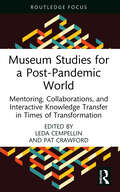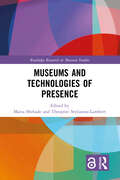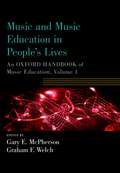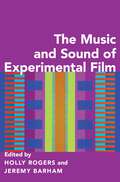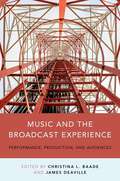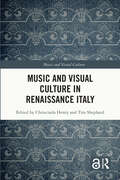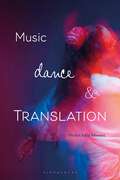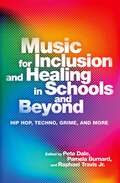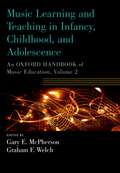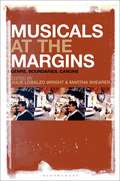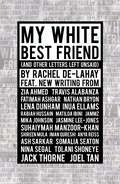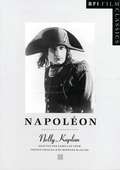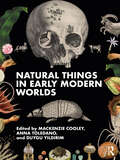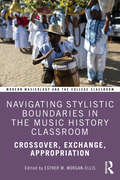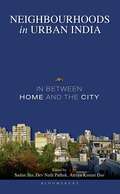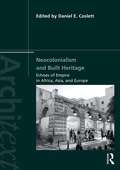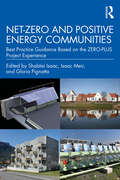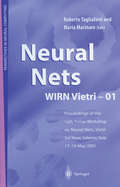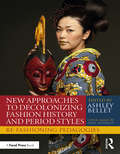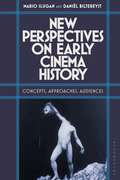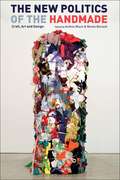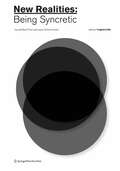- Table View
- List View
Museum Configurations: An Inquiry Into The Design Of Spatial Syntaxes
Museum Configurations demonstrates how museum space functions cognitively and communicatively and questions whether it can be designed to provide a rich embodied experience, situating displays and their public in felicitous dialogue. Including contributions from authors working in the disciplines of architecture, psychology, museum studies, history and the visual arts, this volume addresses an interdisciplinary audience. The analysis of a wealth of examples shows how the voices of architects, curators and exhibition designers enter into dialogue and invite visitors to make their own connections between physical, cognitive and affective space. Considering how the layout of museums facilitates movement and orientation so that visitors may devote their attention to displays, the book questions what kinds of visual attention characterizes museum experiences and how the design of museum space can support them. In the context of an often dematerialized, atomized, and dissipating contemporary culture, the book proposes that museums can function as shared space that supports enjoyment and learning without being overly didactic. Museum Configurations focuses upon the functions and aims of the design of space. This makes the book particularly interesting to academics and students working in exhibition design and museum architecture, as well as to exhibition designers, curators, and architects.
Museum Studies for a Post-Pandemic World: Mentoring, Collaborations, and Interactive Knowledge Transfer in Times of Transformation
Museum Studies for a Post-Pandemic World demonstrates that digital literacy, creativity, and resilience, as the COVID-19 pandemic has so vividly illustrated, are now vital components of the classroom and of the curator’s toolbox.Museum studies students are increasingly asked to engage with new team dynamics and collaborative models, often relocated to the virtual world. Authored by academics, cultural heritage partners, students, and alumni, the chapters in this volume move beyond a consideration of the impact of digitisation to envision new strategies and pedagogies for fuller, more sustainable approaches to cultural literacy, exhibition, and visitor engagement. International case studies present models of collaborative practices between teams of diverse sizes and professional backgrounds. The volume demonstrates that the COVID-19 pandemic has forced the use of a variety of pedagogically and culturally significant hybrid and virtual models that provide innovative learning modalities to meet the needs of future generations of digital native patrons. This book offers meaningful strategies that will help academic and cultural heritage institutions engaged in museum studies to survive — and even thrive — in the face of future disasters by expanding programme accessibility beyond the physical confines of their buildings.Museum Studies for a Post-Pandemic World will be of interest to students and researchers engaged in the study of museums, the arts, cultural management, and education. It should also be of interest to museum practitioners around the world.
Museums and Technologies of Presence (Routledge Research in Museum Studies)
In view of the ever-increasing use of interactive and emerging technologies in museum spaces, Museums and Technologies of Presence rethinks the role of such technologies as potential facilitators of presence and as vehicles for offering new, immersive, and embodied visitor experiences.This edited collection presents theoretical approaches and case studies that explore how presence can be experienced in museum spaces and what role technology can play in visitor experiences. It considers the theoretical underpinnings of the concept ‘presence’ for museum spaces, offering a critical examination of how immersive and other emerging technologies can affect, diminish or enhance our sense of presence and embodiment. Through an international range of case studies and innovative projects, this volume considers emerging technologies – including virtual reality, augmented reality, interactive (multisensory) installations, and AI – alongside different aspects of presence, including immersion, embodiment, empathy, emotion, engagement, and affect.Taking an interdisciplinary approach, Museums and Technologies of Presence will be beneficial to those researching or studying in the fields of Museum Studies, Digital Humanities, Computer Science, Information Science, and Digital Media. It will also be useful to museologists, curators, and artists who are interested in developing immersive experiences, experimental new media, and immersive aesthetics.
Museums for Peace: In Search of History, Memory, and Change
Museums for Peace: In Search of History, Memory and Change highlights the inspiring as well as conflicting representations and purposes of diverse museums for peace around the world.Coming from various cultural and professional backgrounds, the authors explore “what are museums for peace and what do they mean?” Some chapters introduce alternative histories of peace, conflict, and memorialization. This innovative collection examines grassroots museums, military sexual slavery, historical memory in East Asia, and cultural heritage in the Africanized peace museum movement. The chapters discuss differing representations of Gandhi, technology of war and opposition to it, and structural violence such as racial terror and imperialism. Investigating how institutions interact with political and cultural forces, the volume demonstrates that some museums reinforce hegemonic narratives, while others resist authoritative tropes to reveal silenced histories, including peace histories.Museums for Peace will appeal to academics and students in museum studies, heritage studies, peace studies, memory studies, social justice, and human rights. Those working in cultural studies and trauma studies will also find this volume valuable.The Open Access version of this book, available at http://www.taylorfrancis.com, has been made available under a Creative Commons Attribution-Non Commercial-No Derivatives (CC-BY-NC-ND)] 4.0 license.
Music and Music Education in People's Lives: An Oxford Handbook of Music Education, Volume 1 (Oxford Handbooks)
Music and Music Education in People's Lives is one of five paperback books derived from the foundational two-volume Oxford Handbook of Music Education. Designed for music teachers, students, and scholars of music education, as well as educational administrators and policy makers, this first book in the set provides a framework for understanding the content and context of music education, and for future action within the profession. A broad examination of the philosophical, psychological, cultural, international, and contextual issues that underpin a wide variety of teaching environments or individual attributes is paired with 25 relevant and insightful commentaries from established scholars and music educators. Taken as a whole, Music and Music Education in People's Lives gives clear direction to how the discipline of music education can achieve even greater political, theoretical and professional strength. Contributors Harold F. Abeles, Nick Beach, Wayne D. Bowman, Liora Bresler, Patricia Shehan Campbell, Richard Colwell, Robert A. Cutietta, David J. Elliott, Sergio Figueiredo, Lucy Green, Wilfried Gruhn, David Hargreaves, Sarah Hennessy, Liane Hentschke, Donald A. Hodges, Christopher M. Johnson, Estelle R. Jorgensen, Andreas C. Lehmann, Richard Letts, Håkan Lundström, Raymond MacDonald, Clifford K. Madsen, Andrew J. Martin, Marie McCarthy, Katrina McFerran, Gary E. McPherson, Bradley Merrick, Dorothy Miell, Graça Mota, Bruno Nettl, Bengt Olsson, Susan A. O'Neill, Johnmarshall Reeve, Bennett Reimer, James Renwick, Huib Schippers, Wendy L. Sims, David J. Teachout, Rena Upitis, Peter R. Webster, Graham F. Welch, Paul Woodford
The Music and Sound of Experimental Film
This book explores music/sound-image relationships in non-mainstream screen repertoire from the earliest examples of experimental audiovisuality to the most recent forms of expanded and digital technology. It challenges presumptions of visual primacy in experimental cinema and rethinks screen music discourse in light of the aesthetics of non-commercial imperatives. Several themes run through the book, connecting with and significantly enlarging upon current critical discourse surrounding realism and audibility in the fiction film, the role of music in mainstream cinema, and the audiovisual strategies of experimental film. The contributors investigate repertoires and artists from Europe and the USA through the critical lenses of synchronicity and animated sound, interrelations of experimentation in image and sound, audiovisual synchresis and dissonance, experimental soundscape traditions, found-footage film, re-mediation of pre-existent music and sound, popular and queer sound cultures, and a diversity of radical technological, aesthetic, tropes in film media traversing the work of early pioneers such as Walther Ruttmann and Len Lye, through the mid-century innovations of Norman McLaren, Stan Brakhage, Lis Rhodes, Kenneth Anger, Andy Warhol, and studio collectives in Poland, to latter-day experimentalists John Smith and Bill Morrison, as well as the contemporary practices of Vjing.
Music and the Broadcast Experience: Performance, Production, and Audiences
Music and the Broadcast Experience explores the complex ways in which music and broadcasting have developed together throughout the twentieth and into the twenty-first centuries. It brings into dialogue researchers working in media and music studies; explores and develops crucial points of contact between studies of music in radio and music in television; and investigates the limits, persistence, and extensions of music broadcasting in the Internet era. The book presents a series of case studies that address key moments and concerns in music broadcasting, past and present, written by leading scholars in the field, who hail from both media and music studies. Unified by attentiveness both to musical sound and meaning and to broadcasting structures, practices, audiences, and discourses, the chapters in this collection address the following topics: the role of live orchestral concerts and opera in the early development of radio and their relation to ideologies of musical uplift; the relation between production culture, music, and television genre; the function of music in sponsored radio during the 1930s; the fortunes of musical celebrity and artistic ambition on television; questions of music format and political economy in the development of online radio; and the negotiation of space, community, and participation among audiences, online and offline, in the early twenty-first century. The collection's ultimate aim is to explore the usefulness and limitations of broadcasting as a concept for understanding music and its cultural role, both historically and today.
Music and Visual Culture in Renaissance Italy (Music and Visual Culture)
The chapters in this volume explore the relationship between music and art in Italy across the long sixteenth century, considering an era when music-making was both a subject of Italian painting and a central metaphor in treatises on the arts. Beginning in the fifteenth century, transformations emerge in the depiction of music within visual arts, the conceptualization of music in ethics and poetics, and in the practice of musical harmony. This book brings together contributors from across musicology and art history to consider the trajectories of these changes and the connections between them, both in theory and in the practices of everyday life. In sixteen chapters, the contributors blend iconographic analysis with a wider range of approaches, investigate the discourse surrounding the arts, and draw on both social art history and the material turn in Renaissance studies. They address not only paintings and sculpture, but also a wide range of visual media and domestic objects, from instruments to tableware, to reveal a rich, varied, and sometimes tumultuous exchange among musical and visual arts and ideas. Enriching our understanding of the subtle intersections between visual, material, and musical arts across the long Renaissance, this book offers new insights for scholars of music, art, and cultural history. Chapter 15 of this book is freely available as a downloadable Open Access PDF at http://www.taylorfrancis.com under a Creative Commons Attribution-Non Commercial-No Derivatives (CC-BY-NC-ND) 4.0 license.
Music, Dance and Translation
How is music affected by its translation, interpretation and adaptation with, through, and by dance? How might notation of dance and music act as a form of translation? How does music influence the creation of dance? How might dance and music be understood to exchange and transfer their content, sense and process during both the creative process and the interpretative process? Bringing together chapters that explore theory and practice, this book questions the process and role translation has to play in the context of music and dance. It provides a range of case studies across this interdisciplinary field, and is not restricted by genre, style or cultural location. As one of very few volumes to explore translation in relation to music and to overtly tackle this topic in terms of dance, it moves the argument from a broad notion of text and translation, to think critically about the sound and movement arts of music and dance, using translation as a model to better understand the collaboration of these art forms.
Music for Inclusion and Healing in Schools and Beyond: Hip Hop, Techno, Grime, and More
Contemporary popular musics such as hip hop, techno, grime, EDM, drill, house and so on are among the most listened to in the world and yet, typically, they are barely covered in the music classroom if at all. This needs to be better reflected in educational, cultural, and social terms. In wider society, these musics are often treated as if they are the causative for the social dysfunction that, in fact, they merely reflect. At the same time, projects, programmes and practices of such contemporary popular musics can and have supported wellness and healing. Editors Pete Dale, Pamela Burnard, and Raphael Travis Jr. argue that there is huge potential here for enhanced inclusion. Music for Inclusion and Healing in Schools and Beyond explains that when this music is included in the school curriculum or utilised in therapeutic contexts, huge leaps in healing and wellness can be achieved, as well as educational attainment and enjoyment in school contexts. This unique book seeks to account for those positive impacts, theorise them and help to extend and advance their impact. Contributing authors invite readers to re-think the possibilities and potentials for contemporary popular musics to gain the prestige that their actual popularity would suggest they should already command. The various contributors of this book are from diverse ethnic, social and academic backgrounds, and this title includes several chapters from practitioners who have not written about the work they do before now. Readers will learn not only about the impact of projects that utilize such music but also ideas about how that impact can best be measured.
Music Learning and Teaching in Infancy, Childhood, and Adolescence: An Oxford Handbook of Music Education, Volume 2 (Oxford Handbooks)
Music Learning and Teaching in Infancy, Childhood, and Adolescence is one of five paperback books derived from the foundational two-volume Oxford Handbook of Music Education. Designed for music teachers, students, and scholars of music education, as well as educational administrators and policy makers, the second book in this set explores a broad array of key issues, concepts, and debates related to music learning and teaching in three phases of a child's development. The first section provides an expanded view of infancy and early childhood, embracing a key theme that most young children's early music-making is improvised and used to communicate with others and the self. These chapters demonstrate the importance of "motherese" or "parentese" to young children's overall development, the extraordinary diversity and richness of children's early musical engagement, and how this can be viewed as a resource for further learning. The second section is devoted to the learning and teaching of music during the middle years of childhood, when music is often a mandated part of the school curriculum. While recognizing the enormous cultural and national differences, chapters in this section give an overview of many varied and innovative forms of musical learning and teaching globally. The authors address issues related to the types of teachers who provide music instructions to children internationally, how they were educated and trained, and how various nations organize their curriculum in ways that provide children with access and opportunities to engage with music in the classroom. The third section focuses on the musical experiences and development of adolescents aged 12 to 18. These chapters explore the role of music in the lives of young people-including how they use and relate to music, how music educators can best meet students' needs, and the types of musical engagement that can either empower or disempower students through involvement in school music. Contributors Mayumi Adachi, Randall Everett Allsup, Janet R. Barrett, Margaret S. Barrett, Brydie-Leigh Bartleet, Lily Chen-Hafteck, Richard Colwell, Sharon G. Davis, George M. DeGraffenreid, Steven C. Dillon, Magne I. Espeland, Martin Fautley, Eve Harwood, Lee Higgins, Beatriz Ilari, Neryl Jeanneret, Chee-Hoo Lum, Stephen Malloch, Esther Mang, Kathryn Marsh, Gary E. McPherson, Oscar Odena, Chris Philpott, S. Alex Ruthmann, Eric Shieh, Gary Spruce, Johannella Tafuri, Sandra E. Trehub, Colwyn Trevarthen, Kari K. Veblen, Graham F. Welch, Heidi Westerlund, Jackie Wiggins, Ruth Wright, Susan Young
Musicals at the Margins: Genre, Boundaries, Canons
But is it a musical? This question is regularly asked of films, television shows and other media objects that sit uncomfortably in the category despite evident musical connections. Musicals at the Margins argues that instead of seeking to resolve such questions, we should leave them unanswered and unsettled, proposing that there is value in examining the unstable edges of genre. This collection explores the marginal musical in a diverse range of historical and global contexts. It encompasses a range of different forms of marginality including boundary texts (films/media that are sort of/not quite musicals), musical sequences (marginalized sequences in musicals; musical sequences in non-musicals), music films, musicals of the margins (musicals produced from social, cultural, geographical, and geopolitical margins), and musicals across media (television and new media). Ultimately these essays argue that marginal genre texts tell us a great deal about the musical specifically and genre more broadly.
My White Best Friend: (And Other Letters Left Unsaid)
“Could you put your white best friend on stage and remind them that they're part of the problem? Even if you love them? Even if you never want anyone to feel for even a moment how you feel living in this world every day? Would - could - a white person finally hear what you have to say?”Originally commissioned by The Bunker Theatre as a critically-acclaimed festival that ran in 2019, My White Best Friend collects 23 letters that engage with a range of topics, from racial tensions, microaggressions and emotional labour, to queer desire, prejudice and otherness. Expressing feelings and thoughts often stifled or ignored, the pieces here transform letter writing into a provocative act of candour.Funny, heartfelt, wry and heart-breaking, whether a letter to their younger self or an ode to the writer's tongue, this anthology of exceptional writing is always engaging and thought-provoking.Featuring different letters from some of the most exciting voices in the UK and beyond, My White Best Friend (And Other Letters Left Unsaid) includes work from: Zia Ahmed, Travis Alabanza, Fatimah Asghar, Nathan Bryon, Matilda Ibini, Jammz, Iman Qureshi, Anya Reiss, Somalia Seaton, Nina Segal, Tolani Shoneye, Lena Dunham, Inua Ellams, Rabiah Hussain, Mika Johnson, Jasmine Lee-Jones, Suhaiymah Manzoor-Khan, Shireen Mula, Ash Sarkar, Jack Thorne and Joel Tan.
Napoleon (BFI Film Classics)
Abel Gance's film, restored through the efforts of Kevin Brownlow, is discussed here by Nelly Kaplan, who was Gance's assistant and then, later, with such productions as 'The Pirate's Fiancee', a film director in her own right. Each volume in the 'BFI Film Classics' series contains a personal commentary on the film, a brief production history and a detailed filmography.
Natural Things in Early Modern Worlds
The essays and original visualizations collected in Natural Things in Early Modern Worlds explore the relationships among natural things—ranging from pollen in a gust of wind to a carnivorous pitcher plant to a shell-like skinned armadillo—and the humans enthralled with them. Episodes from 1500 to the early 1900s reveal connected histories across early modern worlds as natural things traveled across the Indian Ocean, the Ottoman Empire, Pacific islands, Southeast Asia, the Spanish Empire, and Western Europe. In distant worlds that were constantly changing with expanding networks of trade, colonial aspirations, and the rise of empiricism, natural things obtained new meanings and became alienated from their origins. Tracing the processes of their displacement, each chapter starts with a piece of original artwork that relies on digital collage to pull image sources out of place and to represent meanings that natural things lost and remade. Accessible and elegant, Natural Things is the first study of its kind to combine original visualizations with the history of science. Museum-goers, scholars, scientists, and students will find new histories of nature and collecting within. Its playful visuality will capture the imagination of non-academic and academic readers alike while reminding us of the alienating capacity of the modern life sciences.
Navigating Stylistic Boundaries in the Music History Classroom: Crossover, Exchange, Appropriation (Modern Musicology and the College Classroom)
At a time of transformation in the music history classroom and amid increasing calls to teach a global music history, Navigating Stylistic Boundaries in the Music History Classroom adds nuance to the teaching of varied musical traditions by examining the places where they intersect and the issues of musical exchange and appropriation that these intersections raise. Troubling traditional boundaries of genre and style, this collection of essays helps instructors to denaturalize the framework of Western art music and invite students to engage with other traditions—vernacular, popular, and non-Western—on their own terms.The book draws together contributions by a wide range of active scholars and educators to investigate the teaching of music history around cases of stylistic borders, exploring the places where different practices of music and values intersect. Each chapter in this collection considers a specific case in which an artist or community engages in what might be termed musical crossover, exchange, or appropriation and delves deeper into these concepts to explore questions of how musical meaning changes in moving across worlds of practice. Addressing works that are already widely taught but presenting new ways to understand and interpret them, this volume enables instructors to enrich the perspectives on music history that they present and to take on the challenge of teaching a more global music history without flattening the differences between traditions.
Neighbourhoods in Urban India: In Between Home and the City
'…a brilliant exploration of urbanism between the concept city and the lived city.… The volume focuses on urban life lived between home and the world, institutions and experiences, representations and affects…. Its fascinating range of empirically rich and analytically sophisticated excavations of neighbourhoods make the volume a must-have in the bookshelf on South Asian urban studies.' -Gyan Prakash, Princeton University'A must-read for those who wish to study the micro aspects of contemporary urbanity.' -Sujata Patel, Savitribai Phule Pune University'This book is a powerful addition to the study of Indian urbanism.' -Ravi Sundaram, Centre for the Study of Developing Societies (CSDS)In the last couple of decades, the global South, in general, and India, in particular, have witnessed a massive growth of cities. In India, more than one-third of its population lives in cities. However, urban development, growth and expansion are not merely about infrastructures and enlargement of cityscapes. This edited volume focuses on neighbourhoods, their particularities and their role in shaping our understanding of the urban in India. It locates Indian experiences in the larger context of the global South and seeks to decentre the dominant Euro-American discourse of urban social life.Neighbourhoods in Urban India: In Between Home and the City offers an understanding of neighbourhoods as changing socio-spatial units in their specific regional settings by underlining the way value regimes (religiosity and subjectivities) give neighbourhoods their social meanings and stereotypes. It unpacks discourses and knowledge practices, such as planning, architecture and urban discourses of governance. It further discloses the linkages and disjunctures between the social practices of neighbourhoods and the language, logic and experiences of dwelling, housing, urban planning and governance, and focuses on the particularities and heterogeneities of neighbourhoods and neighbourliness.
Neocolonialism and Built Heritage: Echoes of Empire in Africa, Asia, and Europe (Architext)
Architectural relics of nineteenth and twentieth-century colonialism dot cityscapes throughout our globalizing world, just as built traces of colonialism remain embedded within the urban fabric of many European capitals. Neocolonialism and Built Heritage addresses the sustained presence and influence of historic built environments and processes inherited from colonialism within the contemporary lives of cities in Africa, Asia, and Europe. Novel in their focused consideration of ways in which these built environments reinforce neocolonialist connections among former colonies and colonizers, states and international organizations, the volume’s case studies engage highly relevant issues such as historic preservation, heritage management, tourism, toponymy, and cultural imperialism. Interrogating the life of the past in the present, authors thus challenge readers to consider the roles played by a diversity of historic built environments in the ongoing asymmetrical balance of power and unequal distribution capital around the globe. They present buildings’ maintenance, management, reuse, and (re)interpretation, and in so doing they raise important questions, the ramifications of which transcend the specifics of the individual sites and architectural histories they present.
Neocolonialism and Built Heritage: Echoes of Empire in Africa, Asia, and Europe (Architext)
Architectural relics of nineteenth and twentieth-century colonialism dot cityscapes throughout our globalizing world, just as built traces of colonialism remain embedded within the urban fabric of many European capitals. Neocolonialism and Built Heritage addresses the sustained presence and influence of historic built environments and processes inherited from colonialism within the contemporary lives of cities in Africa, Asia, and Europe. Novel in their focused consideration of ways in which these built environments reinforce neocolonialist connections among former colonies and colonizers, states and international organizations, the volume’s case studies engage highly relevant issues such as historic preservation, heritage management, tourism, toponymy, and cultural imperialism. Interrogating the life of the past in the present, authors thus challenge readers to consider the roles played by a diversity of historic built environments in the ongoing asymmetrical balance of power and unequal distribution capital around the globe. They present buildings’ maintenance, management, reuse, and (re)interpretation, and in so doing they raise important questions, the ramifications of which transcend the specifics of the individual sites and architectural histories they present.
Net-Zero and Positive Energy Communities: Best Practice Guidance Based on the ZERO-PLUS Project Experience
This book presents a methodology for the design, construction, monitoring, optimization, and post-occupancy evaluation of net-zero and positive-energy communities based on the experiences gained in the EU Horizon 2020 ZERO-PLUS project. It describes the steps, tools, and methods developed during the project, providing practical information for the energy and construction sector that will be of interest to students, engineers, architects, developers, and professionals working around high performance architecture and sustainable communities. Through the ZERO-PLUS project, a consortium of 32 partners from eight countries, including academic institutions, technology providers, architects, and construction companies, designed four communities covering completely different geo-climatic regions, construction practices, and cultural backgrounds in Cyprus, Italy, France, and the UK. The communities were designed, optimized, constructed, monitored, handed over to tenants, post-occupancy evaluated, and troubleshooted through a system of continuous collaboration and data acquisition. This book presents these case studies and shows how the project targets of reducing electricity consumption below 20 kWh/m2/y, increasing electricity production from Renewable Energy Systems to over 50 kWh/m2/y, and at cheaper costs when compared to current zero-energy buildings were reached and surpassed. These cases demonstrate that a holistic and interactive approach to design and construction can bring communities a high standard of sustainability. The key features of the book include: • Practical guidance drawn from the interdisciplinary, international, and remote cooperation between experts from academia and industry across the construction sector. • A survey of the state-of-the-art on net-zero and positive-energy communities, including the experience and the lessons learned from previous projects and from the ZERO-PLUS project. • Descriptions of novel emerging renewable energy technologies, integrated into real case study communities to achieve the energy generation target of the communities. • A comprehensive set of approaches, tools, guidelines, best practices, challenges, and lessons learned from the five-year ZERO-PLUS project and the completion of four residential case studies to inform the reader of how to achieve affordable net-zero energy communities. • Four typologies of residential communities located in different climatic conditions are presented, touching on the critical aspects of the design, construction, monitoring, and occupancy phase • A discussion of future trends for developing communities that are more liveable, accessible, and sustainable and which can comply with new energy policies in a way that is affordable for the owners and residents.
Neural Nets WIRN Vietri-01: Proceedings of the 12th Italian Workshop on Neural Nets, Vietri sul Mare, Salerno, Italy, 17–19 May 2001 (Perspectives in Neural Computing)
This volume contains the proceedings of the 12th Italian Workshop on Neural Nets WIRN VIETRI-Ol, jointly organized by the International Institute for Advanced Scientific Studies "Eduardo R. Caianiello" (IIASS), the Societa Italiana Reti Neuroniche (SIREN), the IEEE NNC Italian RIG and the Italian SIG of the INNS. Following the tradition of previous years, we invited three foreign scientists to the workshop, Dr. G. Indiveri and Professors A. Roy and R. Sun, who respectively presented the lectures "Computation in Neuromorphic Analog VLSI Systems", "On Connectionism and Rule Extraction", "Beyond Simple Rule Extraction: Acquiring Planning Knowledge from Neural Networks" (the last two papers being part of the special session mentioned below). In addition, a review talk was presented, dealing with a very up-to-date topic: "NeuroJuzzy Approximator based on Mamdani's Model". A large part of the book contains original contributions approved by referees as oral or poster presentations, which have been assembled for reading convenience into three sections: Architectures and Algorithms, Image and Signal Processing, and Applications. The last part of the books contains the papers of the special Session "From Synapses to Rules". Our thanks go to Prof. B. Apolloni, who organized this section. Furthermore, two sections are dedicated to the memory of two great scientists who were friends in life, Professors Mark Aizerman and Eduardo R. Caianiello. The editors would like to thank the invited speakers, the review lecturers and all the contributors whose highly qualified papers helped with the success of the workshop.
New Approaches to Decolonizing Fashion History and Period Styles: Re-Fashioning Pedagogies
New Approaches to Decolonizing Fashion History and Period Styles: Re-Fashioning Pedagogies offers a wide array of inclusive, global, practical approaches for teaching costume and fashion history.Costume designers, technicians, and historians have spent the last several years re-evaluating how they teach costume and fashion history, acknowledging the need to refocus the discourse to include a more global perspective. This book is a collection of pedagogical methods aimed to do just that, with an emphasis on easy reference, accessible activities, and rubrics, and containing a variety of ways to restructure the course. Each chapter offers a course description, syllabus calendar, course objectives, and learning outcomes, as well as sample activities from instructors across the country who have made major changes to their coursework. Using a combination of personal narratives, examples from their work, bibliographies of helpful texts, and student responses, contributors suggest a variety of ways to decolonize the traditionally Western-focused fashion history syllabus.This collection of pedagogical approaches is intended to support and inspire instructors teaching costume design, costume history, fashion history, period styles, and other aesthetic histories in the arts.
New Perspectives on Early Cinema History: Concepts, Approaches, Audiences
In this book, editors Mario Slugan and Daniël Biltereyst present a theoretical reconceptualization of early cinema. To do so, they highlight the latest methods and tools for analysis, and cast new light on the experience of early cinema through the application of these concepts and methods.The international host of contributors evaluate examples of early cinema across the globe, including The May Irwin Kiss (1896), Un homme de têtes (1900), The Terrible Turkish Executioner (1904) and Tom Tom the Piper's Son (1905). In doing so, they address the periodization of the era, emphasizing the recent boon in the availability of primary materials, the rise of digital technologies, the developments in new cinema history, and the persistence of some conceptualizations as key incentives for rethinking early cinema in theoretical and methodological terms. They go on to highlight cutting-edge approaches to the study of early cinema, including the use of the Mediathread Platform, the formation of new datasets with the help of digital technologies, and exploring the early era in non-western cultures. Finally, the contributors revisit early cinema audiences and exhibition contexts by investigating some of the earliest screenings in Denmark and the US, exploring the details of black cinema going in Harlem, and examining exhibition practices in Germany.
The New Politics of the Handmade: Craft, Art and Design
Contemporary craft, art and design are inseparable from the flows of production and consumption under global capitalism. The New Politics of the Handmade features twenty-three voices who critically rethink the handmade in this dramatically shifting economy. The authors examine craft within the conditions of extreme material and economic disparity; a renewed focus on labour and materiality in contemporary art and museums; the political dimensions of craftivism, neoliberalism, and state power; efforts toward urban renewal and sustainability; the use of digital technologies; and craft's connections to race, cultural identity and sovereignty in texts that criss-cross five continents. They claim contemporary craft as a dynamic critical position for understanding the most immediate political and aesthetic issues of our time.
New Realities: IXth Consciousness Reframed Conference Vienna 2008 (Edition Angewandte)
7 Gerald Bast 8 Roy Ascott 10 Round Table Contents 22 Roy Ascott 190 David McConville 26 Elif Ayiter 194 Francesco Monico 30 John Backwell/John Wood 199 Max Moswitzer 34 René Bauer/Beat Suter 202 Sana Murrani 38 Laura Beloff 207 Ryohei Nakatsu 42 Martha Blassnigg 211 Martha Patricia Niño Mojica 46 Ingrid Böck 215 Carlos Nóbrega 51 Wulf Walter Böttger 220 Robert Pepperell 56 Pier Luigi Capucci 224 Michael Punt 60 Simona Caraceni 228 Susanne Ramsenthaler 65 Antonio Caronia 232 Barbara Rauch 69 Linda Cassens Stoian 236 Nicolas Reeves 73 Isabelle Choinière 240 Clarissa Ribeiro/Gilbertto Prado 78 David Crawford 245 Ana Rosa Richardson 82 Nina Czegledy 248 Glauce Rocha de Oliveira 86 Margaret Dolinsky 253 Natacha Roussel 90 Hannah Drayson 257 Semi Ryu 94 Alan Dunning/Paul Woodrow 261 Miguel Santos 98 Ernest Edmonds 266 Jinsil Seo/Diane Gromala 102 Jürgen Faust 271 Christa Sommerer/Laurent Mignonneau/ 106 Wolfgang Fiel Michael Shamiyeh 110 Andreas Leo Findeisen 276 René Stettler 114 Karmen Franinovic 280 Randall Teal 118 Gonçalo Miguel Furtado 284 Federica Timeto Cardoso Lopes 288 Naoko Tosa/Seigo Matsuoka 123 Martha Carrer Cruz Gabriel 292 Sarah Tremlett 127 Gregory P. Garvey 297 Nicholas Tresilian 132 Luis Miguel Girão 301 Suzete Venturelli/Mario Maciel/ 136 Tina Gonsalves Johnny Souza 140 Jochen Hoog/Manfred Wolff-Plottegg 306 Natasha Vita-More 144 Birgit Huemer 310 Monika Weiss 148 Jung A.

